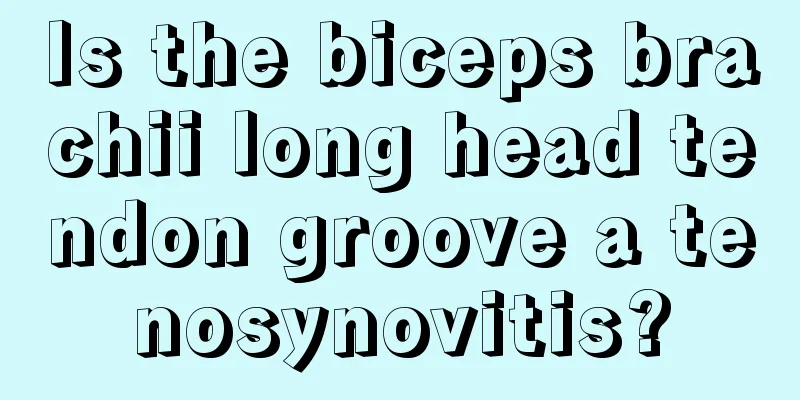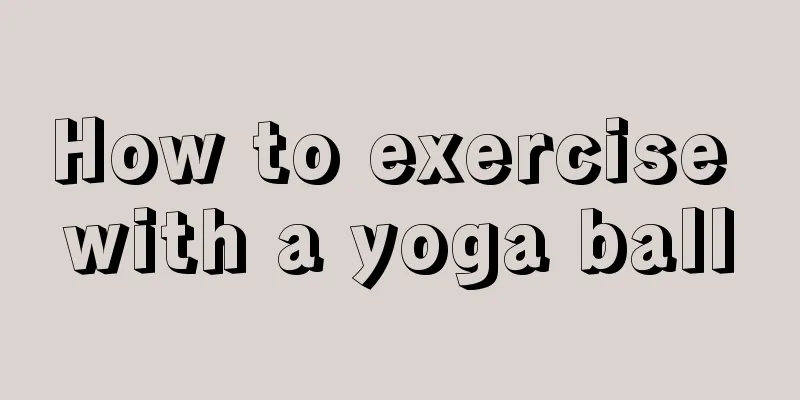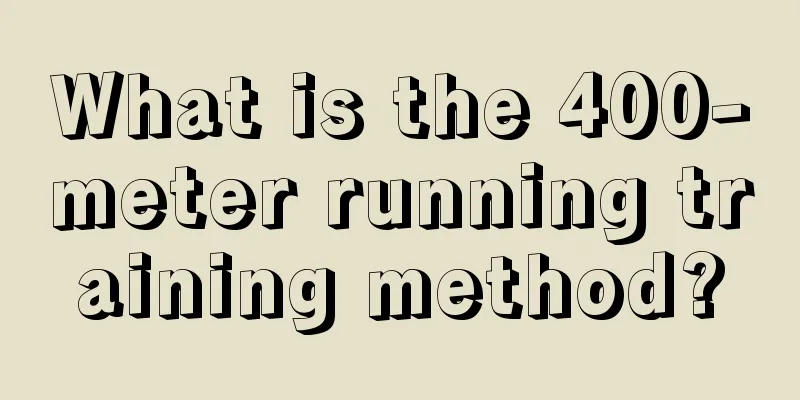Is the biceps brachii long head tendon groove a tenosynovitis?

|
Orthopedic diseases are complicated. Many patients find physical symptoms but are unable to make accurate judgments, otherwise they will treat the disease incorrectly, making the symptoms worse. The long head tendon groove of the biceps brachii is a disease that many patients cannot understand, and they cannot judge the disease from the name of the disease. Therefore, I would like to ask if the long head tendon groove of the biceps brachii is tenosynovitis? In fact, the doctor can only diagnose the disease after examination, and at the same time, it is necessary to combine the patient's symptoms to make a judgment. The long head tendon of the biceps brachii passes through the intertubercular groove of the humerus and enters the anterior part of the subacromial space and inserts on the supraglenoid tuberosity of the scapula. The tendon slides passively in the intertubercular groove of the humerus, that is, the tendon slides upward when the shoulder joint is adducted, internally rotated and extended, and slides downward when the shoulder joint is abducted, externally rotated and flexed. Tenosynovitis of the long head of the biceps brachii is a disease in which this part of the tendon is subjected to long-term wear and tear during shoulder joint movement, resulting in degeneration and adhesion, which impairs the sliding function of the tendon. This disease is more common in patients over 40 years old. The main clinical features are pain in the intertubercular groove of the humerus and limited shoulder joint movement. If not treated promptly, it can develop into frozen shoulder. 1. General symptoms This disease is more common in middle-aged people and is one of the common causes of shoulder pain. The main symptom is shoulder pain, which is more obvious at night, aggravated by shoulder activities and relieved after rest. The pain is mainly localized near the biceps tendon and may also extend to the front of the upper arm. Any movement that causes tension, sliding or stretching of the tendon can aggravate the pain. 2. Local symptoms and characteristics: Tenderness over the intertubercular groove of the humerus or tendon during examination. When the forearm is supinated and the elbow is flexed against resistance, pain occurs in the intertubercular groove, which is called Yergason's sign and is the main basis for diagnosis. In the acute phase, active and passive movement of the shoulder joint may be limited, and protective spasm of the deltoid muscle may occur. In patients with a long course of illness, or combined with periarthritis of the shoulder or other diseases, shoulder joint stiffness and muscle atrophy may be seen. Non-surgical treatments are often effective, such as reducing hand movements, applying Chinese medicine safflower oil and other blood-activating and swelling-reducing drugs, applying plasters, and taking oral non-steroidal anti-inflammatory drugs. If necessary, local blockade treatment can be performed by injecting 0.5-1 ml of lidocaine and triamcinolone acetate suspension into the tendon sheath. For early patients, one injection is enough to be effective. For stubborn patients, it can be done once a week, not more than 4 times. Surgery is suitable for individual stubborn cases. The method is to cut the long head tendon of the biceps brachii below the intertubercular groove, suture the distal end to the short head tendon of the biceps brachii, or fix it to the humerus to eliminate tendon friction and relieve symptoms. Is the long head tendon groove of the biceps brachii tenosynovitis? Whether this phenomenon is tenosynovitis or not depends on the diagnostic symptoms of this disease. We must first observe the patient's symptoms and signs, and of course ask about the patient's medical history, etc., and then analyze based on the symptoms. If we cannot make a judgment, we must do an examination, but the doctor will make an accurate judgment after the examination. When the disease is determined to be tenosynovitis, reasonable and effective treatment must be carried out to prevent the symptoms of this disease from increasing and the disease can be controlled. |
<<: What is the biceps super training method?
>>: What is the biceps connection training method?
Recommend
How to exercise muscles effectively
How to build muscle to achieve the desired effect...
Can doing push-ups improve sexual performance?
Push-ups are a common daily exercise. For most pe...
Why do stretching exercises?
After working for too long, people can't help...
Can I drink water after running?
Running is an extremely important exercise method...
How to grow muscles?
Many people exercise to grow muscles, but growing...
What is yoga for reducing belly fat?
People will be unhappy when they see extra fat on...
This thing can nourish a woman's uterus
Practicing yoga movements is good for women's...
Big men have little secrets
There are still many unsolved mysteries about the...
What are the effects of Ba Duan Jin?
Ba Duan Jin is simple and more practical, which i...
What are the benefits of Health Qigong?
Qigong is a kind of fitness exercise that we can ...
Can running help you get in shape?
Running is our main way to keep fit and lose weig...
What are some quick ways to lose weight through fitness?
Losing weight is not a matter of one or two days,...
What are the precautions for skiing in winter?
There are different sports in different seasons. ...
Is it good to do exercise after meals every day?
Nowadays, people’s pace of life is getting faster...
How can I lose weight by running without gaining muscle?
Running is a sport suitable for everyone, whether...









